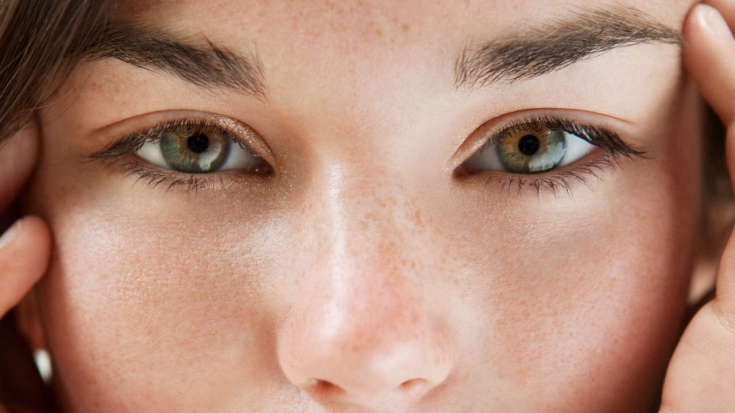The classification of sensitive skin into a separate category is attributed to Helena Rubinstein, who developed cosmetic products for the care of different skin types. Sensitive facial skin is sometimes also called reactive, irritated, in order to more clearly define the boundaries of its problem and not to be confused with allergies. Various studies show that sensitive skin is found in almost every second woman and every third man in the world. Estet-portal.com notes that cosmetologists have to take into account the fact of increased skin sensitivity when choosing treatment tactics for patients.
Factors that provoke the manifestation of sensitive facial skin
To date, scientists have not come to a consensus on what causes the symptom complex of sensitive skin. Some consider the violation of the epidermal barrier to be the cause, others prefer to refer to the neurogenic nature of the increase in sensitivity. There is an opinion that the increased sensitivity of the skin may be its innate property or develop in an adult as a kind of protective reaction.
Factory skin sensitivity factors are usually divided into the following groups:
• exogenous and endogenous;
• provoked by disruption of the epidermal barrier;
• caused by stimulation of the neuroreceptor apparatus of the skin;
• caused by impaired microcirculation and damage to cell membranes.
Depending on the severity of the manifestations, which are caused by the action of various factors, sensitive skin is classified into several types.
|
1 type |
Due to psycho-emotional stress, food irritants |
|
2 type |
Provoked by temperature changes, wind, other climatic factors |
|
3 type |
Occurs due to the use of various detergents |
|
4 type |
The cause is some endocrine disorder |

The group of exogenous factors that cause increased sensitivity of the facial skin is quite large. It is these factors that are especially difficult to calculate and reduce their influence when working with a patient:
• food irritants – alcohol, spices, caffeinated foods;
• climatic factors – cold wind, snow and rain, air conditioning, temperature fluctuations;
• ultraviolet irradiation – hyperinsolation, passion for solarium;
• infectious agents – demodex,
A separate group of provoking factors are dermatological diseases – psoriasis, rosacea, atopic dermatitis, allergic and contact deratitis.
Violation of the epidermal barrier – an important factor in the development of sensitive facial skin
Disturbance of the integrity of the stratum corneum and problems with the epidermal barrier are the most common causes of skin hypersensitivity. Various irritating agents easily penetrate through the broken epidermal barrier – microbes, allergens, irritants. Moisture intensively evaporates through damage to the stratum corneum, as a result, the skin becomes dehydrated, its elasticity decreases, and its protective properties deteriorate.
Subjective sensations of the patient with a broken epidermal barrier:• a feeling of tightness and burning;
• itchy skin, feeling hot;
• paresthesia of varying intensity.
If the patient regularly uses cosmetics with a large amount of emulsifiers, preservatives, fragrances, surfactants, this disrupts the barrier function of the skin and leads to an increase in its sensitivity.
When choosing a treatment regimen and prescribing various comprehensive care programs for patients with sensitive skin, a cosmetologist should first of all take care of restoring the integrity of the epidermal layer. For this, salon procedures and home care are selected with anti-inflammatory and soothing agents that reduce skin reactivity.
The patient will rate as the best treatment regimen that will relieve him of the subjective symptoms of sensitive facial skin and discomfort. The right care regimen will increase patient compliance and improve tolerance to further procedures.
Read also:
Ideal in winter: soothing treatment for sensitive skin







Add a comment